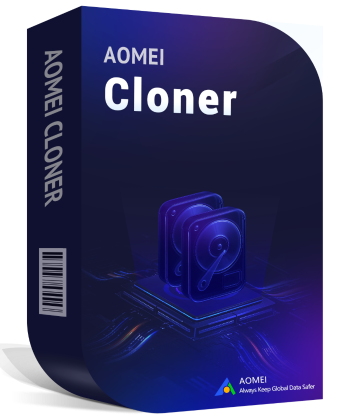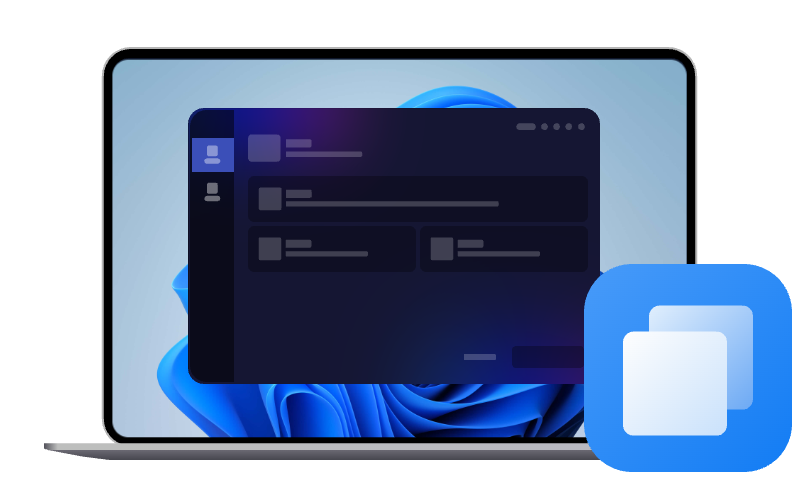Dell Laptop Hard Drive Not Installed: Causes & Top Fixes
Seeing the “hard drive not installed” error on your Dell laptop? This guide explains what causes it and how to fix it step by step. Find all the practical solutions here.
Why Dell computer says hard drive not installed?
Seeing the “Hard Drive - Not installed” message on your Dell computer can be frustrating—especially if it appears suddenly during startup. This error means your system’s BIOS (Basic Input/Output System) cannot detect a connected hard drive or SSD. Without this detection, your computer has nothing to boot from, leading to startup failure.
Here are the most common reasons why this happens:
- Loose or Faulty Hard Drive Connection
- Incorrect BIOS Settings
- Outdated or Corrupted BIOS
- Corrupted System or Boot Files
- Failing or Dead Hard Drive
If your hard drive is physically failing and needs to be replaced, use this tool to transfer everything from the old hard drive to the new drive.
How to fix hard drive not installed on Dell laptop
If your Dell computer says hard drive not found, you can try the following solutions to fix it.
Fix 1: Perform a Hard Reset
A simple hard reset can often resolve the “Dell laptop hard drive not installed” error—especially if it’s caused by temporary hardware miscommunication or static power buildup. Follow the steps below:
1. Shut down your Dell laptop completely and disconnect it from any power source.
2. Unplug all USB drives, external hard disks, docking stations, or peripherals that might interfere with startup.
3. If your laptop has a removable battery, take it out. For non-removable batteries, just unplug the AC adapter.
4. Hold the power button for about 15–20 seconds to discharge any remaining electricity in the motherboard.
5. Reinsert the battery (if removed) and plug in the AC adapter. Then, power on your laptop to see if the error is gone.
Fix 2: Reset or Update BIOS Settings
The error “Dell computer no hard drive detected” still exists? The next step is to check your BIOS settings. Here are two options for your reference:
Option 1: Reset BIOS to Default Settings
1. Restart your Dell laptop. As soon as you see the Dell logo, press F2 repeatedly to enter the BIOS setup.
2. In the BIOS menu, look for an option like “Load Defaults,” “Restore Defaults,” or “Setup Defaults.”
3. Press F10 to save your changes and restart the computer. This restores the original factory BIOS configuration like SATA mode or boot order, which helps resolve the hard drive detection issue.
Option 2: Update the BIOS
If the error persists, your BIOS may need an update. Dell regularly releases BIOS updates to fix hardware detection and compatibility issues.
1. Visit the Dell Support website and enter your laptop’s Service Tag or model number.
2. Under the “Drivers and Downloads” section, locate the newest BIOS update available for your model.
3. Follow the on-screen instructions to install the update, ensuring your laptop is connected to power during the process. Interrupting a BIOS update can cause serious issues.
Fix 3: Run Dell Diagnostics Tool (ePSA)
Dell laptops come with a built-in diagnostic utility called ePSA (Enhanced Pre-Boot System Assessment) that can quickly identify hardware problems, including drive detection failures. Here’s how to run it:
1. Turn off your laptop. Then press the Power button and immediately tap the F12 key repeatedly until the Boot Menu appears.
2. From the Boot Menu, choose Diagnostics and press Enter. The ePSA tool will automatically start scanning your system. Wait until the scan completes.
3. If ePSA detects a problem, it will display an error code and a validation code. Write these down—you’ll need them if you contact Dell Support.
Fix 4: Repair Boot Files
If your Dell laptop still shows the “hard drive not installed” error even though the drive is detected in BIOS or passes diagnostics, the issue might lie in corrupted system or boot files. Learn how to repair these files as follows:
1. Insert a Windows installation USB/DVD. If you don’t have one, download the Windows Media Creation Tool from Microsoft and create a bootable USB on another computer.
2. Restart your laptop, press F12, and select the USB or DVD as the boot device.
3. On the Windows setup screen, choose Repair your computer → Troubleshoot → Advanced options → Command Prompt.
4. In the Command Prompt, type the following commands one by one and press Enter after each:
- bootrec /fixmbr
- bootrec /fixboot
- bootrec /scanos
- bootrec /rebuildbcd
5. Once done, close the Command Prompt and reboot your Dell laptop to check if Windows now recognizes the hard drive.
Fix 5: Replace the Hard Drive
If you’ve tried all previous fixes and the error remains, the drive itself may be failing or already dead. In this case, replacing the drive is the most reliable solution and cloning your data before replacement can save you a lot of trouble. AOMEI Cloner is here to help.

- Full Disk Clone: Transfer everything from one drive to another - operating system, programs, and all your files.
- OS-Only Migration: Just move Windows system and essential boot files.
- Intelligent Clone: Copy only the occupied sectors during the process. It is useful when cloning a larger drive to a smaller drive.
- SSD Optimization: Automatically adjusts partition alignment to maintain your SSD's speed and lifespan.
Follow the steps below to replace Dell laptop hard drive without reinstalling everything:
1. Download and install AOMEI Cloner on a working computer. Connect a USB drive, run the program, and click Tools > Create Bootable Media to create a bootable USB.
2. Connect the bootable USB and the new hard drive you prepared to your Dell computer. You may need a SATA-to-USB adapter to connect the new drive.
3. Power on your laptop, press F12, and select the USB as the boot device.
4. After booting from the USB drive, AOMEI Cloner will load up automatically. Go to Clone > Disk Clone.
5. Select the old hard drive as Source Disk and select the new drive as Destination Disk.
6. Check the SSD Alignment option if the new drive is an SSD, thus improving the SSD performance. Finally, click Start Clone to launch the cloning process.
7. After cloning, you can replace the old hard drive with the newly cloned drive.
- Turn off your laptop and remove all power sources (battery and AC adapter).
- Open the bottom cover using the proper screwdriver.
- Gently remove the old hard drive and disconnect it from the SATA or NVMe slot.
- Install the new drive securely in the same bay.
- Power on your laptop. The system should boot normally from the new hard drive.
Bonus tips to avoid hard drive not detected issues
Once your Dell laptop is running smoothly again, it’s wise to take a few preventive steps to keep the “hard drive not installed” error from coming back.
⭐ Keep BIOS and Drivers Updated
Outdated firmware and drivers can cause compatibility or communication issues between your hardware components.
- Visit Dell Support regularly to check for BIOS, chipset, and storage driver updates.
- Enable Dell SupportAssist to automatically notify you of critical updates.
⭐ Regularly Check Drive Health
Stay proactive by checking your hard drive’s health before problems arise. Use free tools like CrystalDiskInfo to monitor drive temperature, bad sectors, and S.M.A.R.T. status.
⭐ Backup Important Files Frequently
Even a healthy drive can fail unexpectedly.
- Schedule automatic backups with AOMEI Backupper or Windows Backup and Restore.
- Save copies of important files to an external drive or cloud storage for extra safety.
Summary
The “Dell laptop hard drive not installed” error may seem alarming at first, but it’s often fixable with the right approach. However, if your hard drive is physically failing, replacing or cloning it is the best long-term solution.
AOMEI Cloner enables you to replace Dell laptop hard drive without losing files. It works widely for HDDs and SSDs from all popular brands, like cloning hard drive to Samsung SSD, Crucial SSD, WD SSD, etc. Give it a try now!

